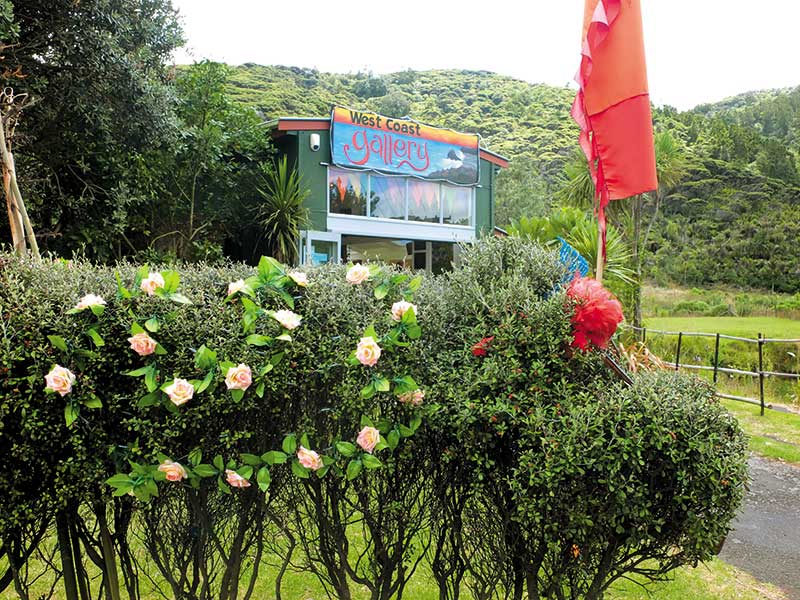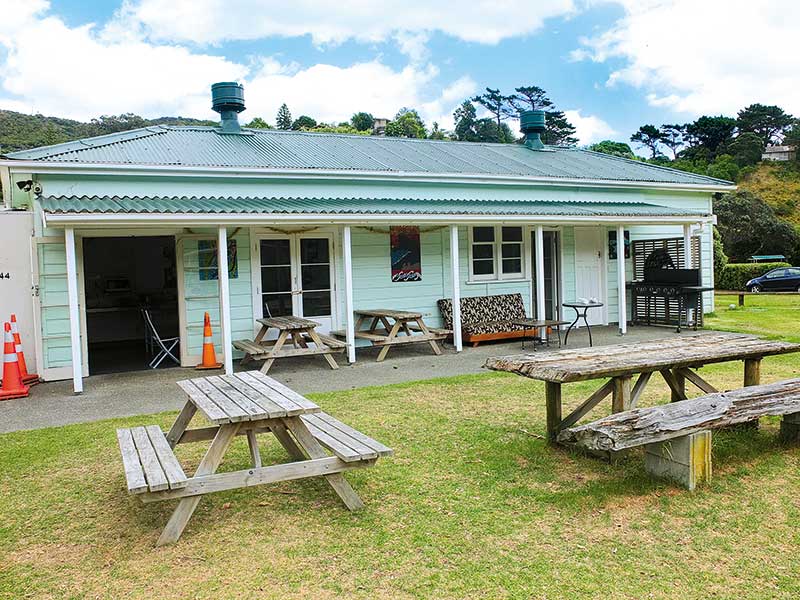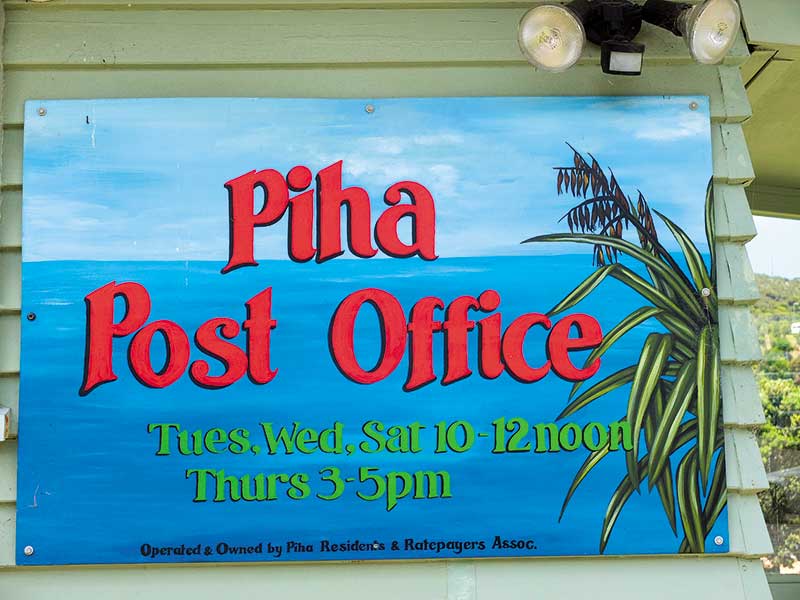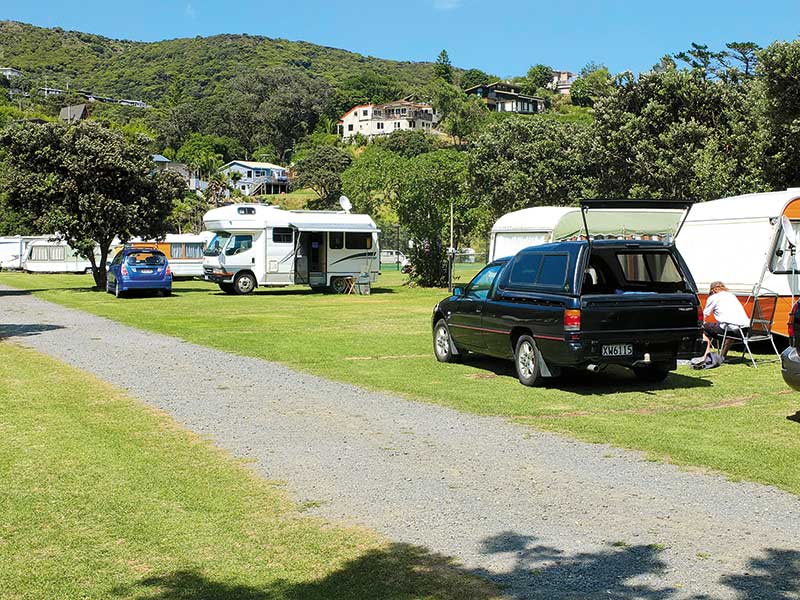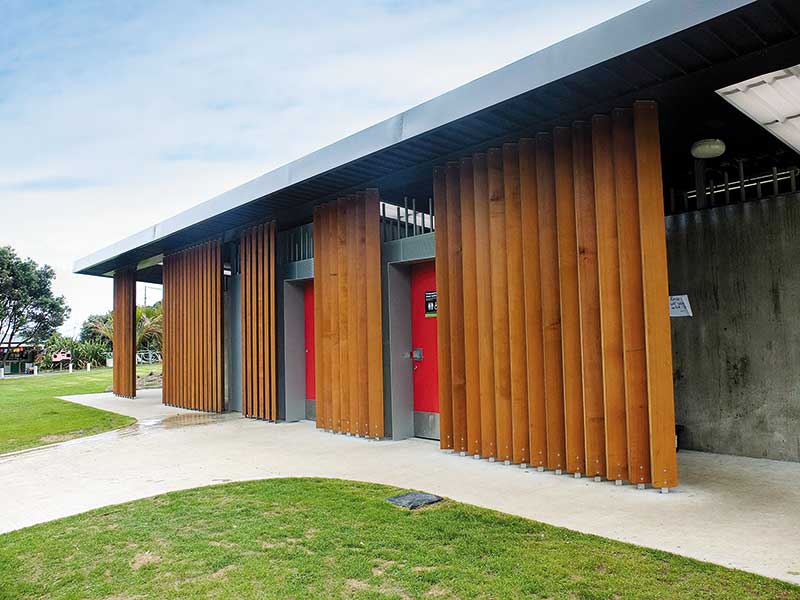It’s also the most motorhome and caravan friendly as, apart from Murawai well to the north, it’s the only one that has a substantial camping ground and, unlike some other places, this is vigorously protected as a prized asset by the Piha community. It’s just had an upgrade, too, with the addition of a smart new ablution block.
Piha Camp
Fiona Anderson has been managing the Piha Camp for the last 15 years. She is well-known as a staunch, no-nonsense administrator who is credited with turning the park from a hell-hole, often over run with drunken party goers, into a quiet, orderly family park.
“Anyone under 20 years of age is banned unless I’m convinced they will behave,” she says. “No one gets under the radar. We patrol the camp relentlessly and if we see anything that looks as if it might disturb the peace, it’s one shot over the bows and then they’re out.”
It was not for this, however, that she was awarded a Peace Foundation Award for community services in 2013. It came to her ears that the kids a Ranui School could not afford to go on a school camp. She rang up and offered the facilities for free.
“The teachers thanked me but said, quite frankly, they couldn’t even afford the bus out there let alone anything else. I got to work and set up a programme to pay for everything. The community really came on board and donated baking, meals, fruit and money and we had 60 kids and staff at the weekend camp and have repeated it every year. All the kids have to bring is themselves.”
There has been a camping ground at Piha since the early 1900s. In those days it took a degree of determination to get there. By horse and cart they came, taking two days to make the journey over a bone-jarring track. I imagine there’d have been few supplies or niceties to be found when they arrived.
By the late 1950s, there was at least a cookhouse and ablution block. They were housed in a timber longhouse, which in a hair-raising exercise, had been lugged down the hill from the defunct WWII Airforce radar station. This historic building, virtually unchanged, still serves as the rather rudimentary camp cookhouse and hub of the camp today.
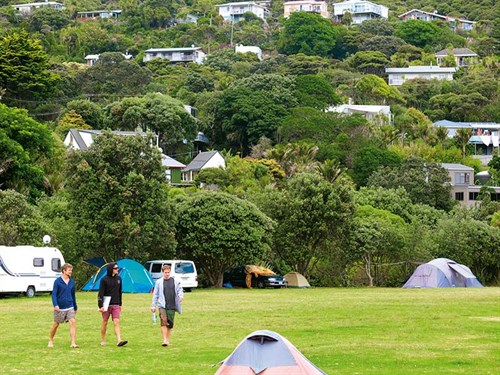
Piha
Piha’s hub is its village. Some Aucklanders living on the benign and calmer eastern side of the island choose to have their holiday cottages in the turbulent west, and these spill down the bush covered slopes like so many shells.
To serve this community and numerous visitors a chummy little collection of amenities has appeared – a general store that first opened in the 1940s, a newish cafe, a surf shop, an art gallery, a small library and a hundred-year-old post office saved from extinction and now run by local rate payers.
The black sands which are so characteristic of Piha and other north-western beaches of the North Island have been ground out of volcanic lahars and ash by about two million years of incessant pounding from the sea. They are rich in an iron ore called titanomagnetite that in other parts of the west coast is extracted and put to use in the commercial production of good grade steel.
Leisure and sport are the main activities at Piha. I seldom swim in the sea. I have visions of being swept into the clutches of a rip or an unforgiving current and never seen again. But it’s great to watch others take the plunge.
At weekends, dedicated surfers come out from the city and bob about in the waves like oversized penguins waiting for the giant breakers to unfurl and speed them to shore. Every day surfcasters spin their lines from rocky outcrops. Unwary fishermen are sometimes swept to their deaths by unpredictable wave surges.
Then there are the various walks. About 2km inland on the Glen Esk stream is the well-graded walk to the Kitekite Falls. In the past I have swum in the pool above the falls and picnicked in the sheltered area at its base.
Back at the beach there is, of course, Lion Rock to climb. This inescapable volcanic plug that divides north and south beaches has always fascinated me because I have never really been able to see any resemblance to a lion.
Read the full article in issue #129 of Motorhomes Caravans & Destinations magazine. Subscribe here.

